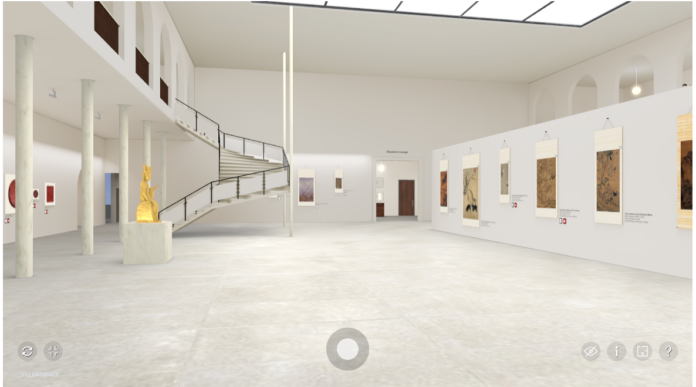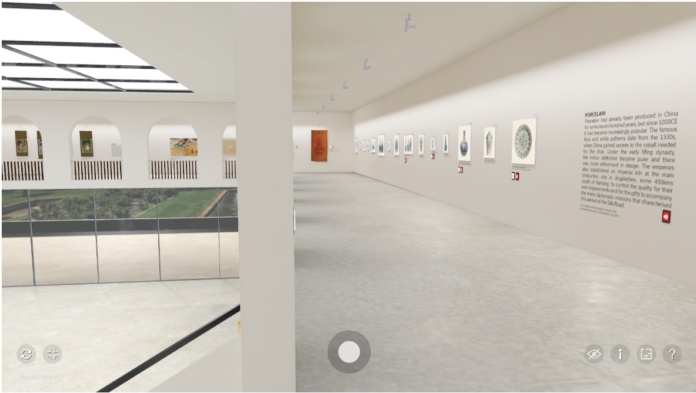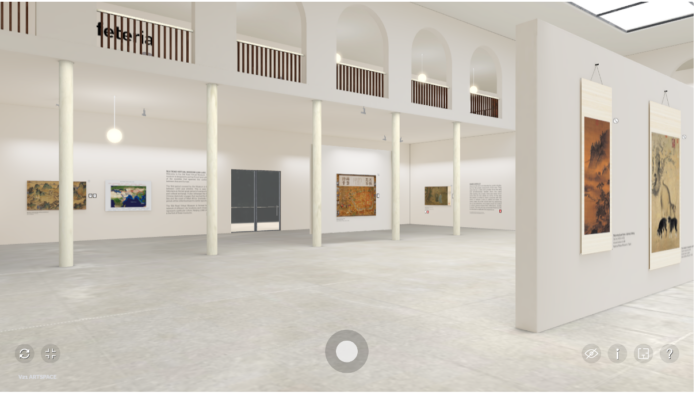Professor Richard T. Griffiths, Emeritus professor International Studies (Leiden), Research fellow Institute for Asian Studies (Leiden), was one of the first contributors to the Diplomat Magazine since 2013 publishing articles related to European and Dutch diplomacy. In this interview he talks about the creation of the Virtual Museum of the Silk Road.
The project is directed by VirtualMuseum360 and supported by the IIAS from January 2023. The mission of a virtual museum is to encourage people to explore cultures along the overland and maritime sea routes between the Far East and Europe. The first museum site is now open (Nanjing) and the second (Venice) will follow towards the end of April.
DM – Tell us more about the idea of creating a virtual museum.
Richard Griffiths. It is a sad fact that after childhood the only time that most people visit a museum is as a compulsory cultural stop of a holiday or a day out. Then, having trudged round for hours looking at artefacts whose significance they barely understand and anyway kept behind glass, they resolve not to repeat the experience for a while.
A virtual museum is always open. It requires no travelling. It is never crowded. You can come, go, and revisit as you please. And it is free.
A virtual museum can also offer experiences impossible in a real-world museum. You can get up close to exhibits. You can unscroll handscrolls and turn the pages of illuminated manuscripts. In one place, you can see exhibits normally scattered throughout the world.
DM – Why was the topic ‘Silk Road’ chosen?
Richard Griffiths. The overland trade routed between Europe and the Far East (and all places in between) are the stuff of legends, but they also facilitated a spread of cultures that was reflected in adaptations of art and design. Admittedly this was between periods of slaughter and destruction, forced migration and enslavement. But when there was peace, trade flourished and exchanges intensified. These were the hey-days of the silk road. Moreover, when land routes were blocked, trade in spices, textiles, ceramics and glass continued by sea. The last days of the overland silk road spanned the period roughly between 1200 and 1500 CE. This is where the museum begins.
DM – What is the mission of the museum?
Richard Griffiths. The world of today immediate visual access to images of conflict. Apocalyptic commentators talk in terms of clashes in civilisations, often cast in religious terms – Buddhists, Christians, Hindu, Jews, and Muslims – both Shiite and Sunni. Our reactions become cauterised; we do not understand; we don’t try to understand.
The virtual museum allows us to stand back from our preconceptions and prejudices and to appreciate a distant culture, admittedly often an elite culture, from a past in where our emotions are less involved. It will allow us to see how different cultures portrayed themselves and their surroundings and how the art and artefacts influenced each other in form and decoration.

The museum is constructed as a series of different city sites, each representing a predominant culture. The first site is already open. It is Nanjing (1368-1450), the capital of the early Ming Empire and the starting point of the treasure voyages of Admiral Zheng He. The second site will be Venice (1261-1450), the richest European port and the starting point of the traveller Marco Polo. It will open in April.

It is hoped that visitors will start to understand different cultures and the influence of beliefs on the forms of art and representation. It is hoped that they will want to learn more (there are eLibraries of free online literature devoted to each site). It is hoped that they will want to visit real-world museums in their own neighbourhoods – and enjoy the experience.
DM – How does the museum work?
Richard Griffiths. You enter the museum through the website and choose a destination. For now, the only choice is to go by sea and visit Nanjing, but that will change very soon. Once the choice is made, you will enter the museum, where there will be some instructions on how to navigate the site. The museum ‘building’ will be the same for every site as you travel through time and space. At the moment the site offers a 3600 immersive experience but we hope to add a Virtual Reality version soon.
The artifacts are introduced with explanatory panels and a short audio commentary is available for some of the exhibits. The main language for all the sites is English. Audio translation is offered in the language of the culture represented. Nanjing offers translation in Chinese; Venice will also offer Italian.

One of the difficulties with the museum is that it is not suitable for artefacts that are very small (e.g. coins, small jade sculptures, pieces of jewellery) or very large (the interior or exterior of buildings). To compensate for this the museum has a city desk (for video ‘excursions’ to places of local interest) and an excursion desk in the ‘departure lounge’ for video excursions to experiences further afield. There is also a ‘theatre’ where the visitors to the Nanjing site can enjoy an opera and where visitors to Venice will enjoy some religious choral music.
DM – Can people participate in the project?
Richard Griffiths. It is not the intention to keep this as a top-down project. We invite the active participation of the local population as well as expertise of academics and museums. Here is a list of possible ways you can offer to help:
- Photograph possible artefacts
- Photogramme possible artefacts (especially larger pieces of sculpture)
- Offer readings from contemporary literature
- Form groups to recreate contemporary music or theatre
- Check translations into local language
- Make audio recordings in local language
- Help create menus for the canteen (what did the local citizen eat eight hundred years ago?)
- Offer additions to the eLibraries (especially in non-English languages)
- Offer advice on inclusions on the site
- Offer to assemble materials for site as part of a group project
- Offer to help find sponsorship for the project
DM – Where should we go next?
You can visit the museum here: https://silkroadvirtualmuseum.com
The newsletter and volunteer page is here:
The Nanjing site is here:
To contact me here:



